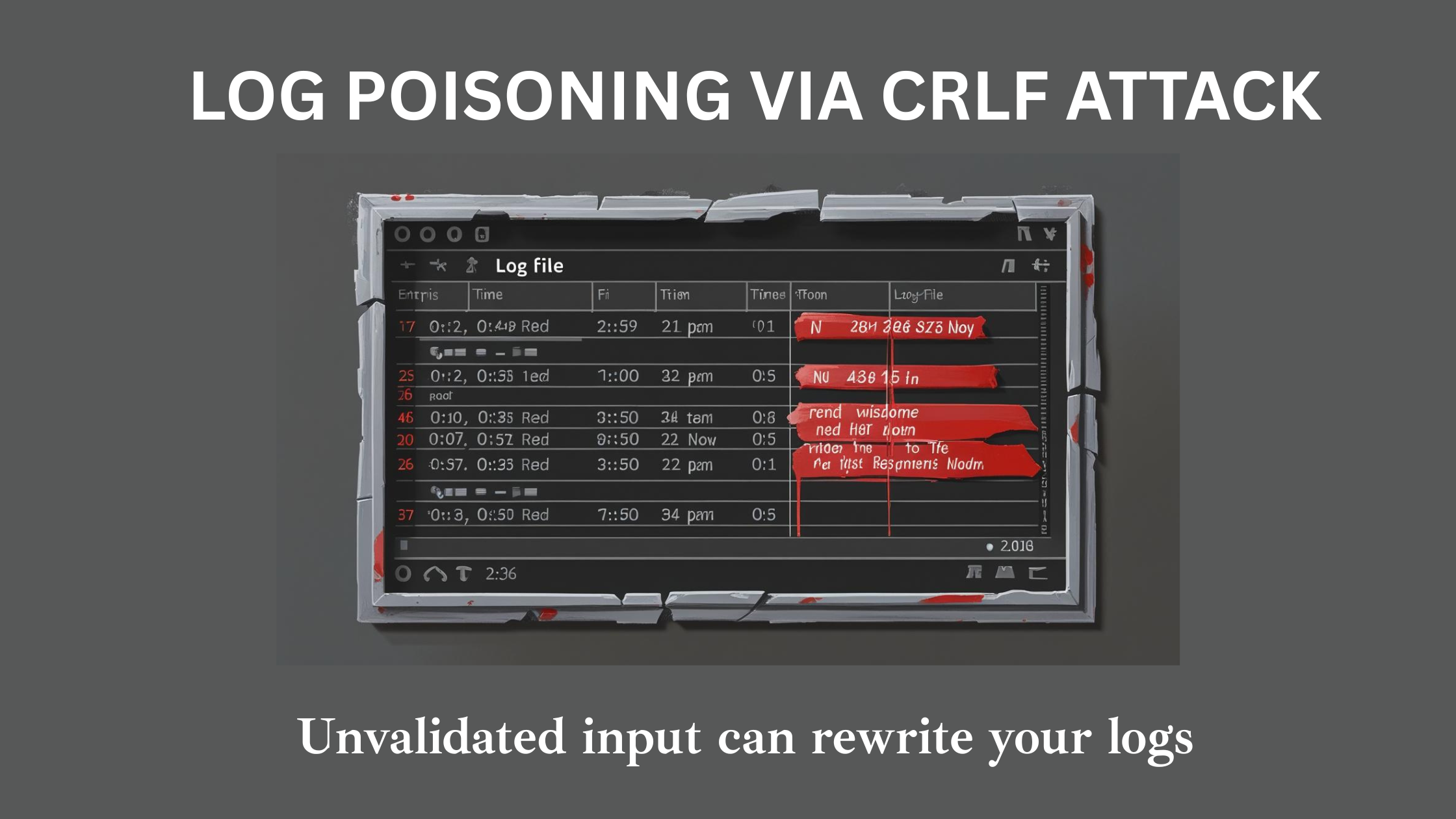LOG POISONING VIA CRLF ATTACK
CRLF Injection and Log Poisoning are security flaws that can confuse system logs, making it hard to trust the information they contain.

ATTACK
CRLF stands for Carriage Return (CR) and Line Feed (LF), which are special characters used to create a new line in text. When an attacker can control input, they can insert these characters into logs, which might create fake log entries or mislead administrators. This is called Log Poisoning.
In a log poisoning attack, attackers can insert false log entries, hide their actions, or manipulate logs to confuse system administrators. This makes it harder to detect issues or track malicious activity.
IMPACT
CRLF injection vulnerabilities occur when an application fails to properly handle user input. If user data is logged directly without proper checks, attackers can inject CRLF characters, causing problems like:
- Fake Log Entries: An attacker can inject CRLF characters to add fake log entries, making it appear as if everything is normal when it’s not.
- Misleading Logs: By injecting new lines, attackers can make logs harder to read or follow, making it difficult for administrators to track issues.
- Header Injection: CRLF characters in web requests or responses can let attackers manipulate HTTP headers, leading to other types of attacks like redirecting responses or cookie poisoning.
How to Prevent and Mitigate the Risk
To prevent CRLF injection and log poisoning, it’s important to properly sanitize and validate any user input before it’s logged. Below are some solutions to fix this issue:
- Escape Special Characters: Before logging user data, make sure to escape special characters like \r and \n. This prevents them from being interpreted as new lines in the log files.
- Whitelist Input: Allow only specific characters for user input. For example, if an input is supposed to be an email address, only allow letters, numbers, and symbols like ‘@’ and ‘.’ , which reduces the chances of harmful characters being injected.
1. Validate and Clean User Input
2. Use Safe Logging Formats
Consider using structured logging formats such as JSON or XML. These formats keep logs organized and prevent special characters from interfering with the log structure.
3. Use Secure Logging Libraries
Use well-established logging libraries (like Log4j or Python's logging module) that automatically sanitize input. These libraries are designed to prevent attacks like CRLF injection by properly handling user data.
4. Limit Access to Log Files
Make sure only authorized people or processes can change or write to log files. This limits the possibility of attackers tampering with the logs after exploiting a vulnerability.
5. Add Integrity Checks to Logs
Use tools like hashing or digital signatures to ensure the integrity of log files. This way, you can quickly spot if logs have been tampered with.
6. Sanitize HTTP Headers
If your application deals with HTTP requests and responses, make sure to clean user input in headers to avoid CRLF injection. Special characters in HTTP headers can lead to serious vulnerabilities.

